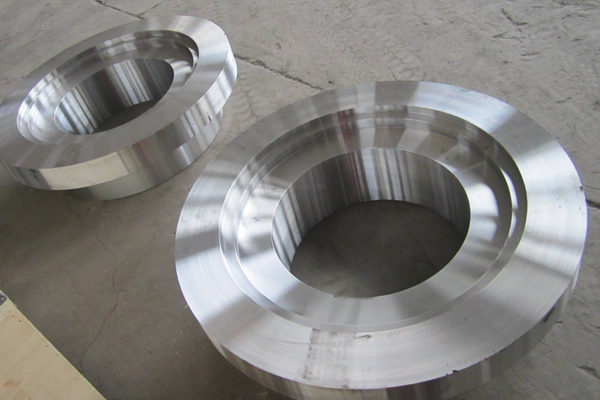The tools and equipment used for free forging are simple, universal and low cost. Compared with casting blank, free forging eliminates shrinkage cavity, shrinkage porosity, porosity and other defects, so that the blank has higher mechanical properties. Forgings are simple in shape and flexible in operation. Therefore, it is particularly important in the manufacture of heavy machinery and important parts.
Application field
Free forgings are controlled by manual operation of the shape and size of forgings, so the forging precision is low, processing allowance is large, labor intensity is large, productivity is not high, so it is mainly used in single, small batch production.
1) The size of billet and the middle size must conform to the operating points of each process, such as the height-diameter ratio (H/D) of material before upsetting is 2-2.5, and the empirical data of section transformation when drawing out.
2) it is necessary to estimate the change of the blank size in the forging processes, for example, the blank height is reduced when punching, generally 1.1 times of the forging height; When the core shaft reaming height is increased.
3) section indentation, must ensure that each part of the forging has enough volume, such as in the step shaft, crankshaft or gear boss billet, do a good job of the volume distribution of each part.
4) When forging with multiple fires, attention must be paid to the possibility of heating each fire in the middle. If the forgings are pulled too long at the beginning, the furnace size is not enough to put into the long forgings during secondary heating. In order to ensure the size and quality of forgings, special attention should be paid to the deformation of the fire after Z and the control of the temperature of the first and final forging after Z.
5) It is necessary to ensure that there is enough trimming allowance after finishing after Z, and attention should be paid to:
(1) Because in the process of pressing shoulder, displacement, punching and so on, there is a phenomenon of drawing and shrinking on the blank, which must leave a dressing allowance in the middle process;
(2) Forging long shaft forgings (such as crankshafts, etc.) and forgings with concave blocks, because their length size can not be upset again, it must be estimated that the size of the length direction will be slightly extended in the dressing and lead to out-of-tolerance.

Forging.
6) When selecting tools, children should use general tools. When the production batch is large, special tools or tire molds can be made to improve the quality and output of forgings.
7) According to the size and quality of the blank, select the existing equipment in the workshop.
Post time: Dec-15-2021
